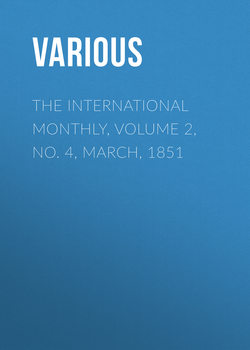Читать книгу The International Monthly, Volume 2, No. 4, March, 1851 - Various - Страница 8
The Fine Arts
ОглавлениеLeutze's Washington Crossing the Delaware.—Our readers are aware of the accident by fire which happened some months since to Leutze's nearly-finished picture of Washington Crossing the Delaware, in consequence of which he abandoned it to the underwriters, intending to commence the work anew for the party from which he had received the order to paint it. The underwriters have accordingly paid the insurance, and are now exhibiting the picture in its incomplete state to the public of Cologne, where it meets with high approval. The Kölnische Zeitung says of it: "In this picture the artist has depicted the events of the hour in which the destiny of the Free States of North America was decided for centuries through the boldness of their courageous and prudent leader. The means of continuing the war were almost exhausted; the army threatened in a few days to dissolve itself; the cause of freedom for that continent, with its inestimable consequences for ancient Europe, would have been postponed, no one can tell how long, perhaps for ever. Then the great mind of Washington conceived what the morally debased, reposing enemy thought impossible. He crossed the Delaware with his army in the night, amid masses of floating ice, and, in the twilight of morning, assailed the inactive camp on the other side. The picture reproduces the moment when the great general,—ahead of the mass of the army, which had also just embarked, and part of which are passing off from the shore, and part already struggling with the driving ice,—is steering to the opposite shore in a small boat, surrounded by eleven heroic figures, officers, farmers, soldiers, and boatmen. The tall and majestic form of the man in whose hands at that hour lay the fate of millions, rises from the group, standing slightly bent, forward, with one foot on the bottom of the boat, the other on the forward bench. His mild yet serious and commanding glance seems seeking to pierce the mist of the farther shore and discover the enemy, while intimations of the future grandeur of his country rise upon his mind. Nothing of youthful rashness appears in the expression of this figure, but the thoughtful artist has depicted the 'heart for any fate' of the general and statesman in noble, vigorous, and faithful traits. And what an impulse moves through the group of his companions! Their thought is, 'Forward, invincibly forward, for our country!' This is expressed in their whole bearing, in every movement, in the eyes and features of all. Under the influence of this thought they command the raging elements, so that the masses of ice seem to dissolve before the will and energy of these men. This is a picture by the sight of which, in this weary and exhausted time, one can recover health and strength. Let none miss a draught from such a goblet of nectar. And while we are writing this, it occurs to us that it was at this very hour seventy-four years ago, in the ice-cold night, Washington crossed the Delaware. And amid the ominous concatenation of events which the weak mind calls accident, but which the clear spirit, whose eye rests on the whole world, regards as the movement of nature according to eternal laws, there rises from our soul the ardent prayer that Germany may soon find her Washington! Honor and fame to the artist whose production has power to work upon the hearts and inflame the spirits of all that behold it!"
Messrs. Goupil & Co. have purchased the duplicate of this work, to be completed on the first of July, for seven thousand dollars. The picture described was unfinished, and has been exhibited by the underwriters, to whom it was given up after the fire.
An Italian picture dealer in London named Campanari, lately bought for a trifle a portrait which has proved to be a genuine Michel Angelo. It represents the famous Vittoria Colonna, wife of the Marchese Pescara, the General of Charles V. She was herself distinguished as a poetess as well as by the impassioned love and adoration of the great painter, who not only took her portrait, but left behind him several sonnets in her honor. Campanari, though himself confident of the genuineness of the picture, could not procure it to be recognized in England. Accordingly he sent it to Rome, where the Academy of San Luca, with Minardi at its head, unanimously decided in its favor. In fact, it contains a grandeur and sublimity which could be ascribed to nobody but the author of the prophets and sibyls of the Sistine Chapel. An antique repose is displayed in the whole work, perfectly agreeing with the character of the lady as described by Michel Angelo, and which suits the advanced age at which she is painted. The execution is like that of the picture in the Florentine Tribune, in the wonderful facility of its execution. In the coloring a carnation hue is remarkable, like that in Michel Angelo's Roman works. The hands of the figure are thought to be by some other artist. Only the head and part of the person seem to be by the author. The picture has suffered little from time, some parts having apparently been repaired by a later pencil. It is valued at $30,000.
The Munich Art-Union gives to its subscribers for the next year a galvanograph of Rubens' Columbus. This is the first time that galvanography has been applied to such a purpose. The plate from which the print is taken has been copied by the galvanoplastic process, so that it can serve for other art-unions also. For 1851 the Munich Union has decided on engraving four Greek landscapes by C. Rottman. These plates will also be copied by the same process, and may be had at much less than the cost of original plates.
